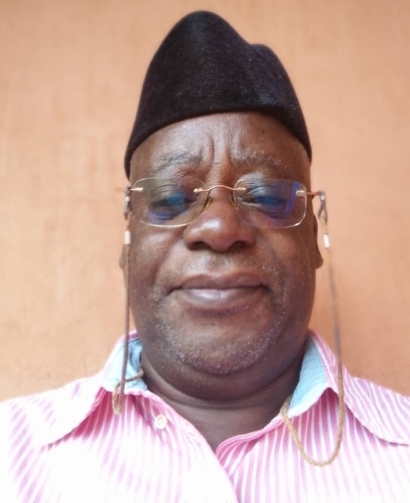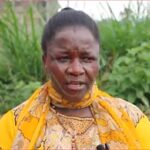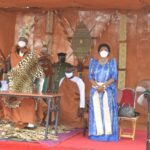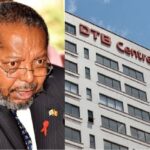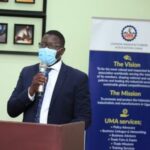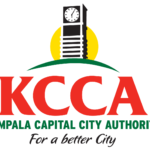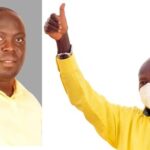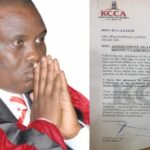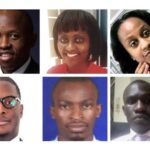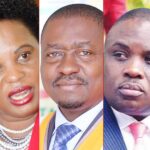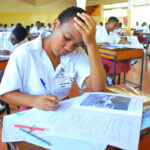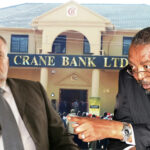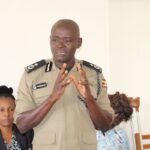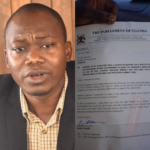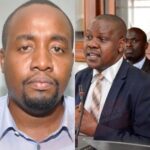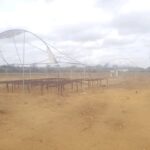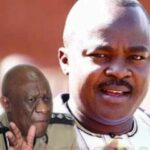By Oweyegha-Afunaduula
As I wrote in an article on “Peace in a globalized world: Does it always mean the absence of war?” our World is so interconnected and interdependent that globalization is proceeding with the agency of trade and technology, especially the World Wide Web or Internet that it is foolhardy to talk of independence or nonalignment.
However, political powers are resisting Internet and trying to role their back into the 20th Century when the World Wide Web was emerging.
Despite the increasingly intricate interconnections and interdependences, some countries are stuck with the idea of nonalignment.
The cardinal question is: Is Non-Alignment Movement (NAM) still relevant?
As Basanta Nirola asked in his article “Is Non-Alignment Movement Still Relevant?” citing Gosh Peu (2014) in Globescope on 6th September 2020. it can be said that NAM’s contribution can be best assessed in terms of Six D’s- Decolonization, Detente, Disarmament, Development, Democratization and Dissemination.
The ten Principles of NAM agreed at the Afro-Asian Conference held in Bandung, Indonesia, in1955 are:
Respect for fundamental human rights and of the objectives of the Charter of the United Nations on Human Rights
Respect for the sovereignty and territorial integrity of all nations
Recognition of equality among all races and of the equality among all nations, both large and small
Non-intervention or non-interference into the internal affairs of another country.
Respect of the right of every nation to defend itself , either individually or collectively in conformity with the Charter of the United Nations
Non-use of collective defense pacts to benefit the specific interests of any of the great powers.
Non-use of of pressures by any country against other countries.Refraining from carrying out or threatening to carry out aggression or from using force against the territorial integrity or political independence of another country.
A peaceful solution of all international conflicts in conformity with the Charter of the United Nations.
Promotion of mutual interests and cooperation.
Although the Government of President Tibuhaburwa Museveni has violated some of these Principles over the last 38 years in power, and currently paying billions of dollars to the Democratic Republic of Congo (DRC) for the involvement of its soldiers in the robbery of its resources and killing of its people and other violations of human rights in that country before and soon after the overthrow of President Mobutu in the late 1990s, Uganda is hosting the 19th Summit of the Nonaligned Movement from 15th to 20th January 2024 in Kampala.
The theme of the Summit will be “Deepening Cooperation for Shared Global Affluence”. The Summit will follow closely after the meeting of Speakers of Parliaments in the Commonwealth.
It should also be remembered that before the African Union adopted globalization in 2002 as the pathway to Africa’s development the Uganda Government was the first country in Africa in 2000 to embrace globalization without asking many questions.
The City’s roads, which are often dusty during the dry season, flooded during the rainy season, full of potholes and too narrow in many parts of the city, are being speedily worked on.
The speed with which they are being worked on is causing concern among residents. Many residents think that the roads are being worked on so opportunistically as if the Summit was not anticipated.
“What is being done to the roads is no more no less than makeshift, just for the sake of making them attractive for the NAM delegates during the Summit”, said one resident who stopped driving his car on the potholed roads because the costs of repairing his car had shot up beyond his means”
“We shall back to the abnormal, which has become the norm, of moving on narrow, potholed, dusty, may be flooded roads as soon as the Summit ends”, said another Ugandan. “I grew up in this stay and am now working in the same city.
Iam now 35 years old. I have never traveled out of Uganda. I have always thought that Kampala was never without dusty, narrow, flooded roads. I think after the NAM Summit we shall go back to usual abnormal, which is the normal”.
Whatever the case, President Tibuhaburwa Museveni is destined to become the Chairman of NAM for the next three years (2024-2027).
It is unlikely NAM will be bothered about the breaches of some of its Ten Principles by the Government of President Tibuhaburwa Museveni. All it will want to achieve is success of the Kampala Summit.Of course, the questions that are l looming at large in the heads of many inquisitive people are:
How nonaligned are African countries in general and Uganda in particular?
Is NAM still relevant long after the cold War between the West and East ended in 1991 and when the World is far more globalized than before, thanks to the intricate interconnectedness and interdependency through trade and technology, particularly World Wide Web?
Will NAM be relevant in this century of environment, new knowledge production and communication since these issues are not captured in its principles?
It is hoped that the rains will have subsided so that the usual city floods do not welcome the Nonaligned Countries Summit. But is the floods go the dust will take over. There is little the authorities can do about the dust although with efficient planning and professionalism, something can be done to ensure that city roads are not flooded.
Otherwise, the first summit of NAM took place in Belgrade, Yugoslavia in 1961 followed by the basic concept for the group originated in 1955 during discussions that took place at Afro-Asian Conference held in Bandung, Indonesia.
It is today a political forum of 120 countries that are not formally aligned with or against any major power blocs. It consists 53 countries from Africa, 39 from Asia, 26 from Latin America and the Caribbean, and two from Europe.
NAM was founded in Belgrade, Serbia, in 1961 with the view to advance the interests of developing countries in the context of Cold War confrontation between the Western and Eastern Power Blocs.
The power blocs were two: one led by the defunct Soviet Union (Eastern Power Block) and the other led by the United States of America (The Western Power Block). The founding fathers of the NAM were Jawaharlal Nehru of India, Josip Broz Tito of the defunct Yugoslavia, Sukarno of Indonesia, Gamel Nasser of Egypt and Kwame Nkrumah of Ghana.
In its first three decades NAM played a crucial role in the decolonization, the formation of new independent states and the democratization of international relations.
Currently, every African country (except South Sudan) is a member of the Non-Aligned Movement. I don’t know why South Sudan, the newest independent country in Africa, which became a member of the East African Community (EAC) recently, a member of the Nile Basin Initiative (NBI) and the United Nations (UN) simultaneously soon after it weaned itself from Sudan around 2010, is not a member of NAM.
During 1989 and 1990, the Berlin Wall came down, borders between then West Germany and East Germany opened, and free elections ousted Communist regimes everywhere in Eastern Europe.
In late 1991 the Soviet Union itself dissolved into its component republics. With stunning speed, the Iron Curtain was lifted and the Cold War came to an end. But it had fueled armaments with chemical, biological and atomic weaponry and ensured that several attempts at disarmament failed to bear fruit. By the end of the Cold War, several Countries, had acquired chemical, biological and atomic weapons helped by either the Soviet Union or the USA.
In its prime the Soviet Union, former northern Eurasian empire (1917–1991) stretching from the Baltic and Black seas to the Pacific Ocean and, in its final years, it consisted of 15 Soviet Socialist Republics (SSRs); the reason the country was called Union of Soviet Socialist Republics. The SSRs were Armenia, Azerbaijan, Belorussia, today known as Belarus, Estonia, Georgia, Kazakhstan, Kirgiziya today known as Kyrgyzstan, Latvia, Lithuania, Moldavia, today known as Moldova, Russia, Tajikistan, Turkmenistan, Ukraine, and Uzbekistan.
The capital of the Soviet Union was Moscow then and now the capital of Russia.
In 1989 the Western Bloc consisted of USA, Canada, UK, France, West Germany, Spain, Portugal, Italy, Benelux (Belgium, Netherlands and Luxembourg), Denmark, Norway, Iceland, Greece and Turkey. Soon after the collapse of the USSR East Germany and West Germany became one country Germany.
In all Cold War maps, the Western Bloc countries were coloured blue,and Eastern Bloc countries were coloured red. Blue was often associated with the sea, and many Western Bloc countries, such as the United States and the United Kingdom, have strong naval traditions. Red, on the other hand, has historically been associated with socialism and communism, which were prevalent in many Eastern Bloc countries.
The rest of the world was sandwiched between the Western Bloc and the Eastern Bloc. They had to choose either to be aligned to the East or West or manifest as nonaligned in NAM.
However, some neutral countries in Europe existed throughout the time the Cold War existed, between 1945 and the end of the cold war in 1991, namely: Austria, Finland, Switzerland and Sweden,Nivedita Das Kundu (2007) wrote about the new sociopolitical and socioeconomic situation of the Former Soviet Union States (FSU) and their relation to Russia.
The FSU states consist of 4 major blocks: The Slavic States (Slavs), the Baltic States (Balts), Central Asia and the Caucasus. The Slavic States consist of Ukraine, Belarus (previously Belorussia) and Moldova. They have cultural and religious ties with each other.
The Baltic States are on the East coast of the Baltic Sea. They include Latvia, Lithuania and Estonia. Central Asia consist of Uzbekistan, Turkmenistan, Tajikistan, Kyrgyzstan and Kazakhstan.
The Caucasus is a region in Eurasia bordered on the south by Turkey and Iran, on the West by the Black Sea, on the East by the Caspian Sea and to the North by the European part of Russia.
The Caucasus Mountains divide Asia and Europe. The nation States of the Caucasus include Georgia, Armenia and Azerbaijan, I do not know of any former Soviet Socialist Republics that have joined NAM.
For two years now Russia and Ukraine have been in a fierce war, because Ukraine wants to align itself with the West in the European Union and Russia detests that. In the war Belarus has openly aligned with Russia while the West has aligned with Ukraine.
The war, which some writers, such as Samuel Raman (2024), have characterised as “Putin’s war on Ukraine, continues. The West does not seem to be united in how to salvage Ukraine from Putin’s war on the country, although that country has openly announced that it wants to be part of Western Europe in the North Atlantic Treaty Organization (NATO), a military alliance that has persisted since the Cold War.
Putin is fighting Ukraine because he does not want to hear of Ukraine bringing NATO at Russia’s doorstep.
NAM is grasping for contemporary relevance. It is clinging to outdated bloc mentalities within the United Nations and other global bodies. In so doing, NAM is undermining the search for constructive solutions to today’s most pressing, complex transnational problems (Stewart Patrick, 2012).
Today such problems are called wicked problems because they don’t lend themselves easily to the simple analyses and solutions suggested by disciplinary scholars and professionals.
There is need to rethink neutrality and nonalignment for new era of globalization and renewed suspicions between Russia and the West and the Israeli military onslaught in the Middle East. NAM is not a legal entity.
It is also important to ask: How will NAM relate with the new phenomenon of BRICS in international relations? BRICS brings together Brazil, Russia, India, China and South Africa. Russia used to be the key republic of the defunct USSR. China is closely related to Russia politically, technologically, economically and militarily. Although not directly involved in Putin’s war in Ukraine, China has not condemned the invasion of Ukraine by Russia.
One writer says “the NAM of the 21st century is pragmatic and instrumental but is also characterized by vocal opposition to issues such as the U.S. invasion of Iraq, reduced development assistance, climate and energy inequities and other “sins of the West.
For many NAM members and countries that have been supportive of the movement, like China, these historical grievances have made them reluctant – or at least hesitant – to side with the West in multilateral forums, which includes today an unwillingness to “take sides” between Russia and the West regarding the war in Ukraine”.
This reluctance was on full display early in the conflict when the U.N. General Assembly put forward a resolution in March 2022 condemning Russia’s invasion of Ukraine. While 141 U.N.-member states supported the measure, 25 abstained, including two influential NAM members, India and South Africa. The following month, when the General Assembly voted to expel Russia from the Human Rights Council, more dissenting voices emerged, with 58 member states abstaining and 24 voting against it.
These abstentions included the surprising additions of several large nations, like Brazil, Mexico, Nigeria, Egypt and Indonesia, three of which are core members of the NAM.
It will be interesting to hear the stand of the members of NAM when they meet in Kampala on the issue of Israeli, intransigence, aggression, hostility, destruction and annihilation of life in Gaza, which was hitherto governed by the Palestine Authority Government. Some Members are supporting Israel while others are on the side of the Palestinians. The USA, which has been a non-repentant supporter of Israel, has expressed concern over the war actions the small overmilitarized country in Gaza, which has also said it will never leave Gaza.
Western European countries are also divided over Israel. Russia’s stance cannot be pro-Israel because it has never, although many Jews flowed into the new country from Russia when it was created in 1948, mainly through orchestration by Great Britain, in an area previously occupied by Palestinians.
I have not heard the stand of the Uganda government on the Israeli war of annihilation in Gaza. However, early the Putin-Ukrainian Tibuhaburwa Museveni to host the NAM Summit in Kampala. While the West was solidly on the side of Ukraine, President Tibuhaburwa Museveni’s son, Muhoozi Kainerugaba, then Commander of the Uganda Peoples Defense Forces UPDF) ground forces, almost dented Uganda’s nonaligned stance when, in 2022, he announced that he would send Ugandan troops to defend Moscow in case of an “imperialist” threat.
As if that was not enough, Uganda abstained from UN votes on the Ukrainian conflict, including one in February on the first anniversary of the Russian invasion of Ukraine, which called on Moscow to withdraw its troops from the country.
Russia has traditionally had strong ties to Africa because of its support for independence movements on the continent that were then struggling with colonial powers, and also a source of military hardware for most political regimes in African including the NRM Regime in Uganda. As indicated elsewhere in this article, many African countries shifted their votes, with only 10 African countries voting for the suspension, 24 African countries abstaining, and 11 not participating at all. This reflected the ties of Africa with Russia.
So, as Uganda prepares to host the NAM Summit in Kampala and for President Tibuhaburwa Museveni’s Chairmanship of the Movement for three years, the questions remain:
How nonaligned is Uganda?
How nonaligned is Africa?
How nonaligned is the African Union?
How relevant is the Nonaligned Movement in the 21st Century and beyond?
How will NAM relate with BRICS?
How will NAM take care of Environment, New Knowledge Production and Communication (Internet)?
How exactly will NAM make itself relevant in the 21st Century and Beyond?
What will NAM’s stance towards globalization?
Will Uganda and other members of the African Union rethink globalization?
Will the NAM Summit end up as another political ritual?
Hopefully answers to these questions will emerge from the 19th NAM Summit in Kampala.
BIBLIOGRAPHY
Andrew Cheatham (2023). The New Nonaligned Movement is Having a Moment. United States Institute of Peace.
Nelson Naturinda (2023). Uganda to take over Nonaligned Movement Mantle.
The East African, November 18 2023.
Nivedita Das Kundu (2007). Russia and the Former Soviet States: Dynamics of Relations. Policy Perspectives, Vol. 4, No. 1 (January – June 2007), pp. 49-59 (11 pages)https://www.jstor.org/stable/42909162
Serhii Plokhy (2023). The Russo-Ukrainian War: The Return of History. W. W. Norton & Company (Publishers)
Samuel Raman (2024). Putin’s War on Ukraine. Hurst Publishers.
Stewart M. Patrick (2012). The Nonaligned Movement’s Crisis. https://www.cfr.org/blog/nonaligned-movements-crisis

